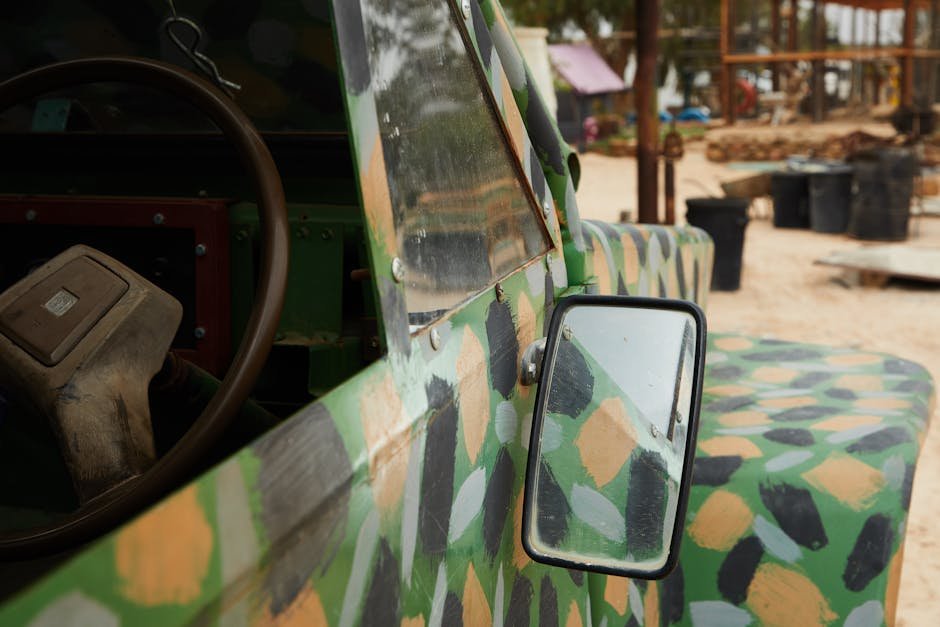Clear Paint Film vs. Ceramic Coatings: Which is Right for Your Vehicle?
Clear Paint Film vs. Ceramic Coatings: An Introduction
When it comes to protecting your vehicle's paint, you have two popular options: clear paint film and ceramic coatings. Both offer benefits in terms of shielding your paint from scratches, chemicals, and UV rays. Clear paint film, also known as paint protection film or PPF, is a transparent layer applied to your car's surface. It acts as a barrier against rock chips, road debris, and other external elements. On the other hand, ceramic coatings are liquid polymer coatings that bond with the paint on a molecular level, providing a durable and hydrophobic layer. Each option has its pros and cons, so it's essential to understand the differences between clear paint film and ceramic coatings to determine the best fit for your vehicle's protection needs.
Understanding Clear Paint Film
Clear paint film, also known as paint protection film, is a transparent layer applied to your vehicle's paint to protect it from scratches, chips, and stains. This film is typically self-healing, meaning it can correct minor scratches on its own. Clear paint film is a great option for maintaining your car's resale value by preserving its paint in top condition. When considering this protective layer for your vehicle, it's essential to weigh the pros and cons compared to ceramic coatings to determine which option best suits your needs.
What are Ceramic Coatings?
Ceramic coatings are liquid polymer solutions that are applied to the exterior of vehicles. Once applied, they chemically bond with the vehicle's factory paint, creating a protective layer. This layer acts as a shield against swirl marks, minor scratches, dirt, and UV rays. Ceramic coatings are known for their durability, with some lasting up to 2-5 years before needing reapplication. These coatings provide a high gloss finish and make it easier to clean the vehicle as they repel dirt and water effectively.
Benefits of Clear Paint Film
Clear paint film provides a protective layer for your vehicle's paint, shielding it from scratches, swirl marks, and stone chips. It is self-healing, which means minor scratches can disappear with a bit of heat. This film is resistant to UV rays, preventing your car's paint from fading over time. Additionally, it is easy to maintain, requiring only regular washing to keep your vehicle looking new.
Benefits of Ceramic Coatings
Ceramic coatings provide long-lasting protection for your car's paint. They create a strong barrier against scratches, dirt, and UV rays, keeping your vehicle looking shiny and new for longer. Ceramic coatings also make cleaning your car easier, as dirt and grime are less likely to stick to the surface. This means less time spent washing and maintaining your car's appearance. Additionally, ceramic coatings can enhance the depth and gloss of your paint, giving your vehicle a showroom-worthy finish.
Durability of Clear Paint Film
Clear paint film coatings are highly durable, offering strong protection against scratches, chips, and other damage to your vehicle's paint. These coatings are generally self-healing, meaning they can repair minor scratches on their own under the right conditions. Clear paint film coatings can last up to 5 years or more with proper maintenance, providing long-term protection for your vehicle's exterior.
Durability of Ceramic Coatings
Ceramic coatings are known for their durability, lasting up to two to five years with proper care. Unlike clear paint film, ceramic coatings provide long-lasting protection against scratches, UV rays, and chemicals. This makes ceramic coatings a popular choice for car owners looking to maintain their vehicle's appearance for an extended period.
Cost Comparison: Clear Paint Film vs. Ceramic Coatings
Clear paint film is generally more cost-effective than ceramic coatings. A clear paint film installation can range from around $500 to $1500 for a full car application, while ceramic coatings typically cost between $500 to $2000. However, the cost can vary depending on factors such as the size and type of vehicle, the complexity of the application, and the brand of the product used. When considering which option is right for your vehicle, it's essential to weigh the upfront cost against the long-term protection each option provides.
Application Process for Clear Paint Film
For applying clear paint film, it is vital to ensure that the vehicle's surface is clean and free of any dirt or debris. First, the paint film is carefully cut to fit the specific areas of the vehicle where protection is desired. Next, the film is slowly and steadily applied to the surface, ensuring there are no air bubbles trapped underneath. Afterward, the film is smoothed out and pressed down firmly to adhere properly. Finally, the edges are trimmed for a precise fit, and the film is left to cure as per the manufacturer's instructions. Following these steps diligently will help achieve a seamless application of clear paint film for optimal protection.
Application Process for Ceramic Coatings
Ceramic coatings are usually applied by professionals in a series of steps to ensure a proper bond with the vehicle's paint. Here's a brief overview of the application process:
Preparation: The car is thoroughly washed and decontaminated to remove any dirt, grime, or residue.
Correction: Any paint imperfections like swirls or scratches are corrected to ensure a smooth surface.
Application: The ceramic coating is carefully applied using specialized tools, following the manufacturer's instructions.
Curing: The coating needs time to cure and bond with the paint, often requiring a designated period without exposure to water or extreme conditions.
Maintenance: After the coating has fully cured, proper maintenance is essential to prolong its effectiveness and keep your vehicle looking its best.
